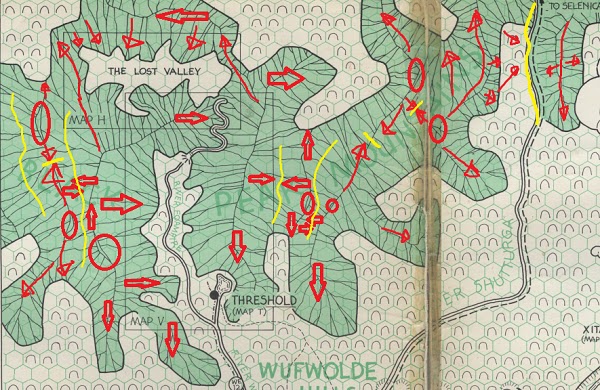In the map below I have marked what I consider to be the direction of slope in this interpretation. the red arrows point downslope, the red circles are peaks, and the yellow lines are low points or the bottom of a saddle.
the biggest issue with this interpretation is the western side of the lost valley. the mountains around the valley must slope up based on textual descriptions and be steep, this means that the edge of those mountains into darokin is probably a straight drop. It can't be sloping down from teh valley edge to the foothills because that would be a slope over a distance of 2 miles to a height of up to 4000 ft for the valley floor, that is not steep enough to be inaccessible to the outside world.
The main reason I'm thinking the lines are all ridges is because of their complete interconnectedness. If there were a valley in between spurs the lines of the valley bottom wouldn't connect directly to the central ridge, there would be small gaps between the central ridge and the valleys. This pattern can be seen in many mountain ranges on google earth.


No comments:
Post a Comment